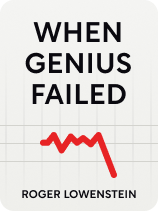

This article is an excerpt from the Shortform book guide to "When Genius Failed" by Roger Lowenstein. Shortform has the world's best summaries and analyses of books you should be reading.
Like this article? Sign up for a free trial here.
How did John Meriwether get his start with the investment firm Salomon Brothers? What role did Meriwether play in forming LTCM?
In When Genius Failed, Roger Lowenstein writes that hedge fund manager and arbitrage expert John Meriwether was pivotal in the conception and formation of LTCM. He formed the arbitrage group at the investment firm Salomon Brothers, where he had previously worked.
Let’s look at the rise of John Meriwether, Salomon Brothers’ hand in LTCM’s creation, and how they set the stage for LTCM’s rise and fall.
Meriwether’s Career at Salomon Brothers
Lowenstein writes that, at Salomon Brothers, John Meriwether began his journey by learning the intricate art of arbitrage, a strategy that would become the linchpin of his success. Meriwether’s arbitrage strategy at Salomon Brothers enabled him to exploit price discrepancies, turning them into substantial profits.
At its core, notes Lowenstein, Meriwether’s strategy was rooted in the concept of convergence. He believed that differences in price between nearly identical financial securities would eventually equalize. By structuring his trades to bet on these convergences, he consistently emerged richer at Salomon Brothers, far more often than he faced losses.
Example: Arbitrage Strategy Across Two Stock Exchanges
Since it’s such a key concept to understanding the book, let’s take some time to illustrate arbitrage with an example.
Suppose Company A is listed on both the New York Stock Exchange (NYSE) and the London Stock Exchange (LSE). On the NYSE, Company A’s stock is trading at $100 per share. On the LSE, Company A’s stock is trading at £80 per share. Assume the exchange rate between the US Dollar (USD) and the British Pound (GBP) is 1 USD = 0.75 GBP. Given this exchange rate, Company A’s stock should theoretically be trading at approximately £133.33 on the LSE to be equivalent to its $100 price on the NYSE. Instead, an arbitrage opportunity exists because it’s underpriced on the LSE.
To execute the arbitrage trade, a trader buys Company A’s stock on the LSE for £80. She simultaneously sells an equivalent number of Company A’s shares on the NYSE for $100 each. So she buys 1,000 shares on the LSE for £80,000 (1,000 shares x £80/share). At the same time, she sells 1,000 shares on the NYSE for $100,000 (1,000 shares x $100/share).
Over time, the prices of the same asset on different exchanges will tend to converge due to arbitrageurs like the hypothetical trader taking advantage of the price difference: The price will rise on the LSE from their buying activity and fall on the NYSE from their selling activity.
As the prices on both exchanges converge, the arbitrage trader profits from the price difference. Suppose the price per share eventually converges to $90 on the NYSE and £90 on the LSE. She sells the 1,000 shares on the LSE for £90,000 (1,000 shares x £90/share) and buys back the 1,000 shares on the NYSE for $90,000 (1,000 shares x $90/share).
After the prices have converged, she’s made a profit because she initially bought on the LSE for a lower price and sold on the NYSE for a higher price. In this example, she has earned a profit of $10,000 (the difference between her initial $100,000 sale on the NYSE and her $90,000 repurchase).
Pioneering the Arbitrage Group at Salomon Brothers
By the early 1980s, writes Lowenstein, Meriwether had assembled a team of academic quants—individuals from academia who could introduce intellectual rigor and computer-based mathematical modeling into trading, moving away from the instinct-driven approach. His team at Salomon Brothers built computer models that identified market inefficiencies. They could pinpoint instances where bond prices deviated from what they “should” be in a perfectly rational market. These discrepancies presented unprecedented opportunities to buy below market value or sell above market value.
The Efficient Market Hypothesis
Lowenstein notes that the intellectual foundation of this computational strategy was the Efficient Market Hypothesis (EMH), which posited that prices of stocks and bonds in the market were always rational. This implied that securities were always correctly priced, and the market would quickly correct any mispriced assets. The belief was that irrationality couldn’t persist—but that temporary irrationality in pricing could be lucrative for the traders who knew how to spot it.
The group consistently delivered impressive results. However, in 1991, the tide turned for Meriwether. A scandal involving a trader in his group rocked Salomon Brothers, ultimately forcing him out of the firm. While evidence of personal wrongdoing on his part was thin, his departure marked the end of an era at Salomon Brothers.

———End of Preview———
Like what you just read? Read the rest of the world's best book summary and analysis of Roger Lowenstein's "When Genius Failed" at Shortform.
Here's what you'll find in our full When Genius Failed summary:
- The 1998 collapse of Long-Term Capital Management (LTCM)
- The history of LTCM, how it operated, and how it achieved success
- Insights to the LTCM story in light of subsequent events






